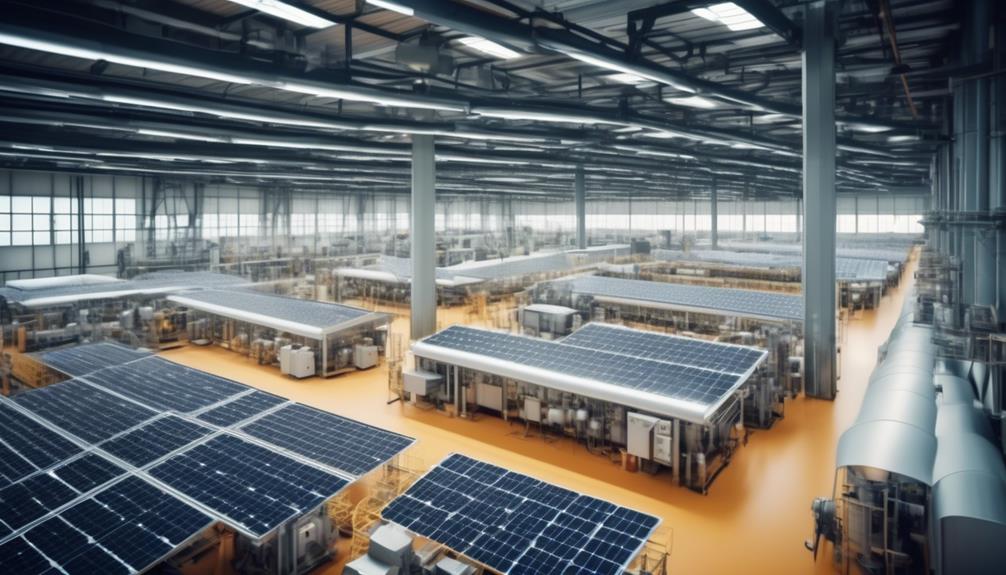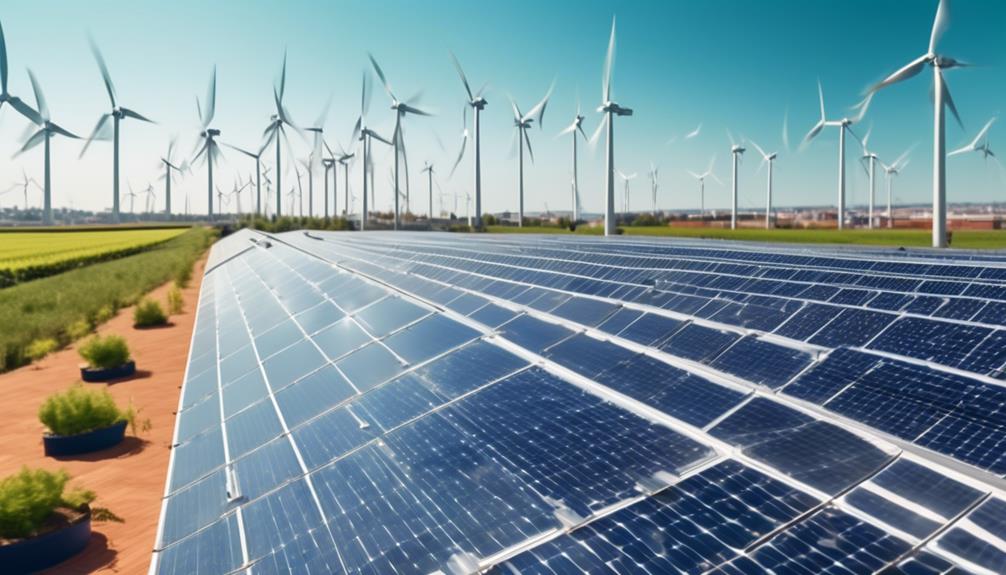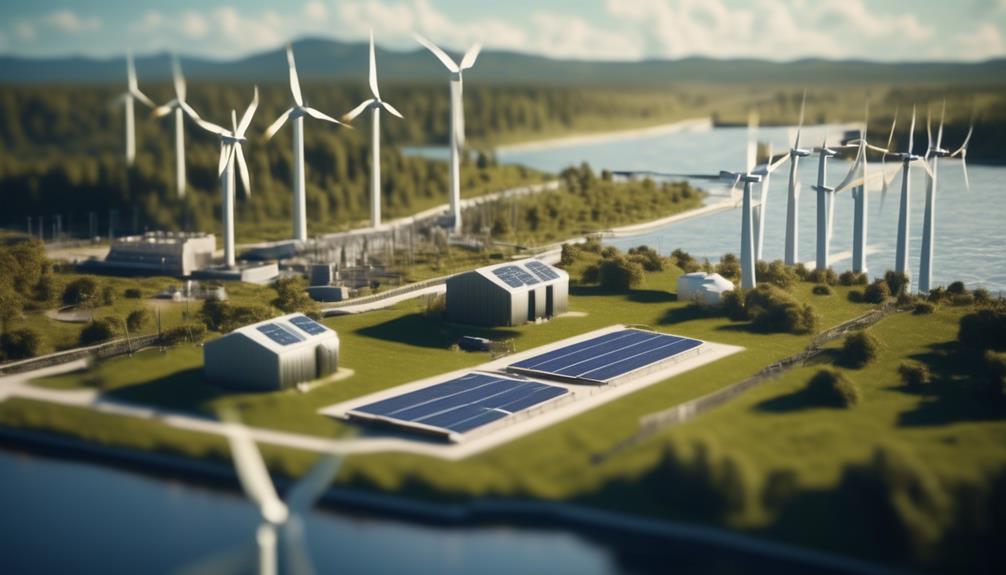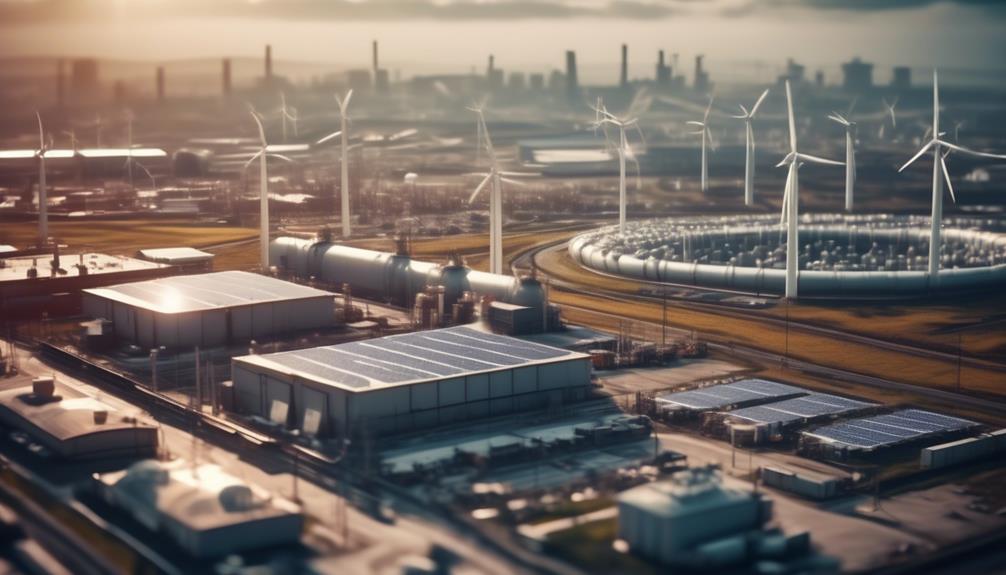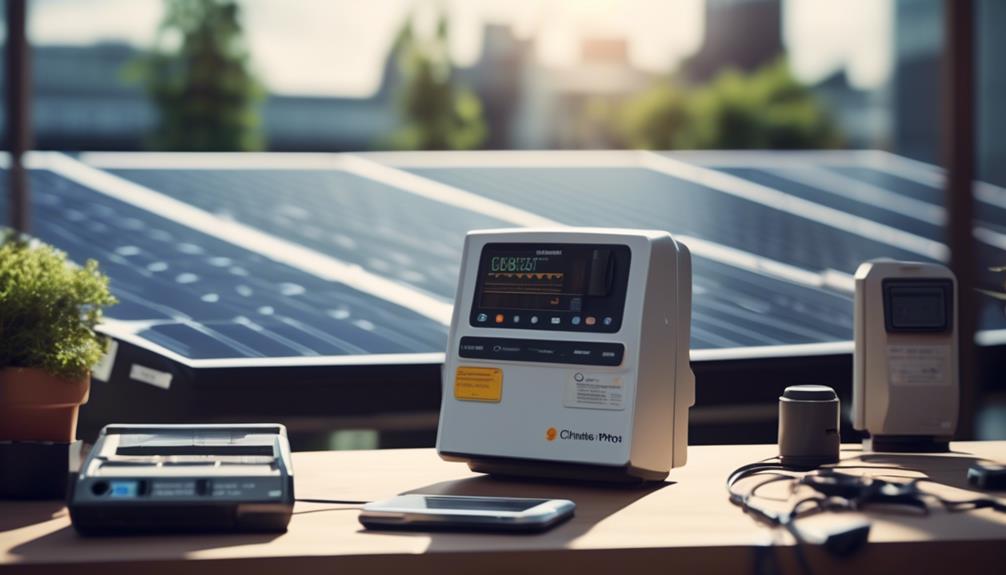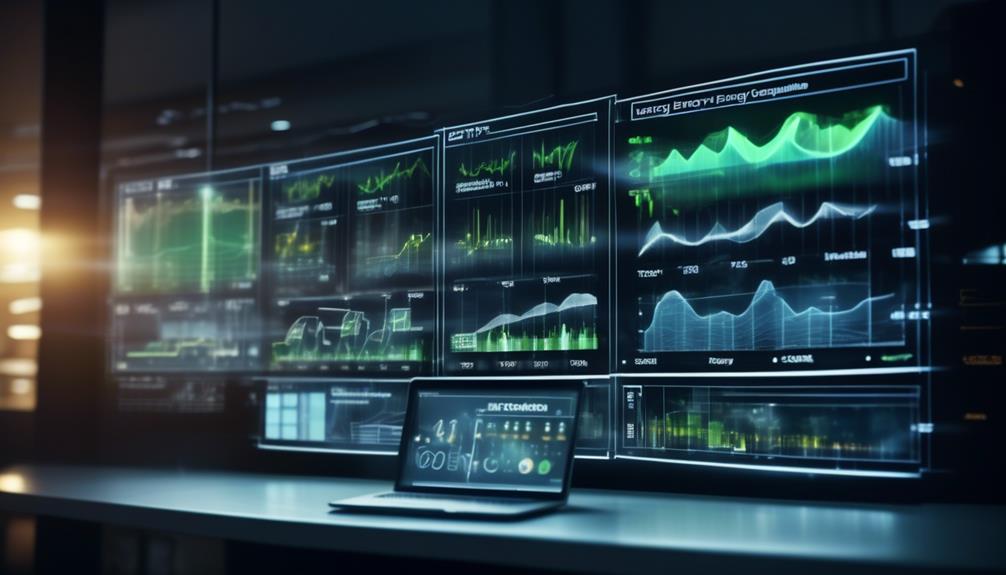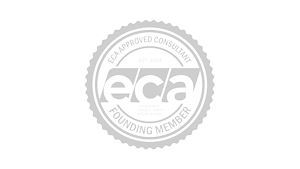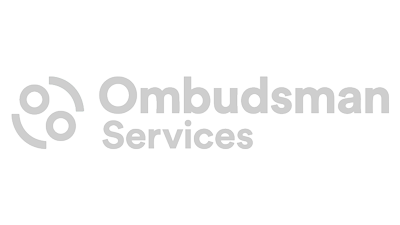In the quest for sustainability and a smaller carbon footprint, industries worldwide are zeroing in on the critical task of benchmarking their energy usage. Understanding how to measure, compare, and ultimately reduce energy consumption is not just about compliance or public image—it’s a vital part of staying competitive in an increasingly eco-conscious market.
However, navigating the complexities of energy data, identifying meaningful metrics, and leveraging this information for tangible improvements presents a formidable challenge.
Drawing on extensive experience in optimising industrial energy efficiency, this discussion aims to demystify the process of energy usage benchmarking. By focusing on practical strategies such as real-time energy monitoring, data analysis for actionable insights, and the adoption of cutting-edge technologies, industries can overcome common hurdles.
These methods not only pinpoint areas for energy savings but also pave the way for continuous advancements in efficiency. As we delve deeper, you’ll find tailored advice that speaks directly to your needs, offering a clear path to not just meeting but exceeding your energy management goals.
Key Takeaways
- Establish specific and measurable energy usage goals
- Implement real-time energy monitoring systems for immediate visibility and proactive management
- Analyse energy usage data to identify areas of inefficiency and opportunities for improvement
- Conduct regular energy audits and reviews to track progress, measure effectiveness, and adapt to changes in energy consumption patterns and regulations.
Setting Clear Energy Usage Goals
To effectively manage energy usage in industrial facilities, it is crucial to set clear and measurable goals that can be achieved within a specific timeframe. By clearly defining specific energy usage goals, facilities can establish a benchmark for their energy management efforts. These goals should be measurable, allowing for progress to be tracked and evaluated. Involving stakeholders throughout the process is essential to ensure buy-in and commitment to achieving these goals.
Measuring progress towards energy usage goals requires the use of reliable data and metrics. Facilities should implement monitoring systems that capture energy consumption data in real-time. This data can then be analysed to identify areas of improvement and track progress towards the established goals. Regular reports should be generated to communicate this progress to stakeholders, fostering transparency and accountability.
Involving stakeholders, such as facility managers, employees, and energy management teams, is vital for the success of energy usage goals. These stakeholders can provide valuable insights and perspectives, contributing to the development of effective strategies and initiatives. Collaborative decision-making and brainstorming sessions can help identify innovative solutions to reduce energy consumption and drive progress towards the established goals.
Establishing a Baseline for Energy Consumption
Establishing a baseline for energy consumption is a crucial step in industrial energy benchmarking. It involves conducting an initial energy assessment and implementing data collection methods to accurately measure and record the current energy usage of a facility.
This baseline serves as a reference point for comparing energy consumption, setting goals, and implementing effective energy management strategies.
Initial Energy Assessment
The initial energy assessment is a crucial step in understanding energy usage patterns and identifying opportunities for energy savings. Accurate data collection is essential for obtaining reliable information on energy consumption. To ensure accurate data collection, organisations should invest in automated metering systems and implement regular data monitoring procedures.
Stakeholder involvement is also crucial during this assessment phase. Engaging stakeholders, such as employees, managers, and energy experts, can provide valuable insights into energy usage patterns and help identify areas for improvement. Additionally, involving stakeholders fosters a sense of ownership and commitment to energy efficiency goals.
Data Collection Methods
During the initial energy assessment, organisations can implement various data collection methods to establish a baseline for energy consumption. These methods include:
- Utilising building energy management systems (BEMS) for real-time measurement and monitoring of energy consumption. BEMS provide accurate and up-to-date information on energy usage, allowing organisations to identify patterns and trends.
- Integrating building analytics software with energy management systems, smart meters, and utility billing systems to automate data collection and streamline the process. This integration ensures data accuracy and reduces manual effort in collecting and analysing energy consumption metrics.
- Using the advanced data analysis and reporting capabilities of building analytics software to track energy performance, identify areas for improvement, and evaluate the effectiveness of energy efficiency measures. This enables organisations to make data-driven decisions and optimise their energy usage.
- Employing machine learning and AI algorithms in building analytics software for fault detection and diagnostics. This helps prioritise maintenance and optimisation efforts, ensuring energy efficiency and reducing downtime.
Implementing Real-time Energy Monitoring Systems
Implementing real-time energy monitoring systems offers a range of benefits for industrial companies. These systems provide immediate visibility into energy usage patterns, enabling proactive identification of energy-saving opportunities as they arise.
Benefits of Real-Time Monitoring
Real-time energy monitoring systems provide immediate visibility into energy consumption patterns, allowing businesses to proactively identify energy-saving opportunities. The benefits of implementing real-time monitoring are numerous:
- Improved Efficiency: Real-time monitoring allows for quick corrective actions to be taken in response to deviations from energy efficiency targets. By identifying areas of energy waste in real-time, businesses can make immediate adjustments to improve efficiency.
- Cost Reduction: Real-time energy monitoring systems help optimise energy usage in response to changing operational needs. By leveraging real-time data, businesses can identify opportunities for energy cost reduction and implement strategies to achieve significant and immediate cost savings through efficient energy management.
- Proactive Energy Management: Real-time monitoring enables businesses to monitor energy consumption continuously and make informed decisions to minimise waste and improve sustainability.
- Enhanced Decision-Making: Real-time data empowers businesses to make data-driven decisions regarding energy usage, resulting in improved operational performance and resource allocation.
Choosing the Right System
With the numerous benefits of implementing real-time energy monitoring, it is crucial for businesses to carefully choose the right system that aligns with their scalability, compatibility, and integration needs.
When selecting a real-time energy monitoring system, scalability considerations play a significant role. Businesses should opt for a system that can handle the growing energy demands of their operations, while also accommodating future expansions or upgrades.
Compatibility requirements are equally important, as the system should seamlessly integrate with the existing infrastructure and equipment. This ensures smooth data collection and analysis without the need for extensive modifications or disruptions to the workflow.
Analysing Energy Usage Data for Insights
To gain valuable insights from energy usage data, a thorough analysis is essential. By analysing energy usage patterns and trends, businesses can identify areas of inefficiency and opportunities for improvement. Here are four key steps to effectively analyse energy usage data:
- Data collection and organisation:
- Gather energy consumption data from various sources, such as smart meters, sensors, and utility bills.
- Ensure that data is organised and properly labeled to facilitate analysis.
- Identify outliers and anomalies:
- Look for unusual spikes or drops in energy consumption that may indicate equipment malfunctions or operational issues.
- This analysis can help identify potential energy-saving opportunities.
- Compare energy usage across different time periods:
- Analyse energy consumption patterns over time to identify trends and seasonality.
- This information can inform the development of energy conservation strategies tailored to specific periods of high or low energy demand.
- Benchmarking against industry standards:
- Compare energy usage data with industry benchmarks to assess your organisation’s performance.
- This analysis can help identify areas where energy consumption is higher than average and pinpoint potential areas for improvement.
Identifying and Addressing Energy Inefficiencies
Identifying and addressing energy inefficiencies is crucial for businesses seeking to optimise their energy usage and reduce costs. To achieve this, companies should implement energy efficiency strategies and conduct regular energy audits and reviews. These audits help identify areas where energy is being wasted or consumed inefficiently. By analysing energy consumption data, businesses can determine if their energy usage exceeds desired standards and identify potential areas for improvement.
Benchmarking plays a vital role in this process. It allows businesses to compare their energy consumption against industry standards and best practices. By setting achievable energy efficiency targets based on benchmarks, companies can track their progress and address any inefficiencies that arise.
Once areas of inefficiency are identified, corrective measures should be implemented promptly. This may include upgrading equipment, optimising processes, or implementing energy-saving measures. Education and awareness are also crucial. Employees should be educated on the importance of energy efficiency and trained to implement energy-saving measures identified through benchmarking.
Regularly Reviewing and Updating Benchmarking Strategies
To ensure optimal energy usage and ongoing cost reduction, it is essential for businesses to regularly review and update their benchmarking strategies by aligning them with evolving industry standards and incorporating new energy efficiency technologies and methodologies. This practice allows companies to stay at the forefront of energy performance evaluation and ensure that their energy benchmarks are accurate and up-to-date.
Here are four key reasons why regularly reviewing and updating benchmarking strategies is crucial:
- Alignment with industry standards: By reviewing and updating benchmarking strategies, businesses can ensure that their practices align with the latest industry standards. This helps them stay competitive and adopt best practices in energy efficiency.
- Incorporation of new technologies: Energy efficiency technologies are constantly evolving, and regularly updating benchmarking strategies allows businesses to incorporate these advancements. This leads to more accurate evaluations and the identification of new energy-saving opportunities.
- Accurate tracking of progress: Regularly reviewing benchmarking strategies enables businesses to accurately track their energy performance over time. This helps them identify areas of improvement and measure the effectiveness of energy-saving initiatives.
- Adaptation to changes: Energy consumption patterns and regulatory requirements change over time. By updating benchmarking strategies, businesses can adapt to these changes and ensure that their energy efficiency efforts remain relevant and effective.
Leveraging Technology for Streamlined Benchmarking Processes
Leveraging technology is an essential strategy for optimising energy benchmarking processes and achieving streamlined efficiency. To streamline benchmarking, integrating automation and energy management software is crucial.
Automation through building analytics software allows for the integration of various data sources, eliminating the need for manual data entry and reducing the risk of human error. This not only saves time but also ensures accurate and reliable data collection.
Continuous monitoring and tracking of energy performance using technology tools help in evaluating the effectiveness of energy efficiency initiatives. Energy management software provides advanced data analysis and reporting capabilities, enabling efficient benchmarking. It allows for the identification of energy-saving opportunities and the measurement of energy performance against established benchmarks.
Moreover, machine learning and AI algorithms in building analytics software aid in fault detection, prioritising maintenance, and optimising energy performance. These technologies can identify anomalies and deviations from expected energy patterns, allowing for proactive measures to be taken to rectify issues and improve energy efficiency.

